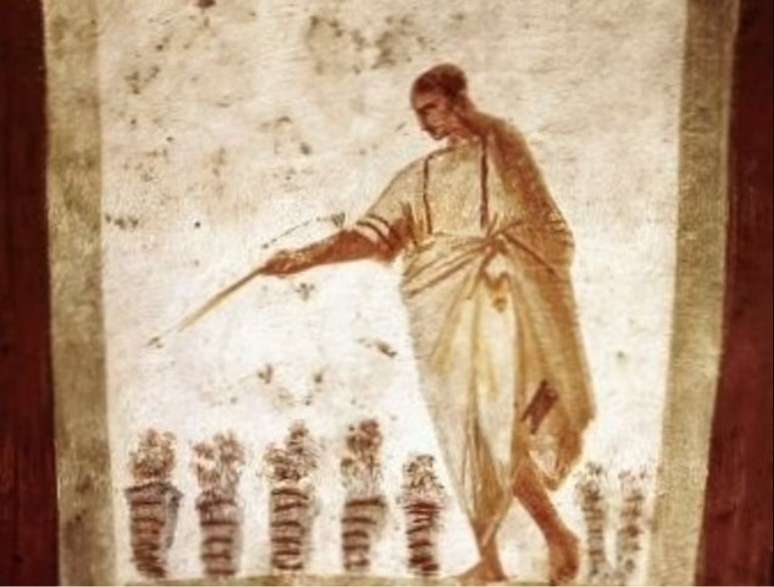Study suggests Jesus may have been portrayed as a magician for a mysterious purpose in images
A new analysis of ancient paintings is reigniting the debate over how Jesus was depicted in early art. Some images from the 15th century show Jesus holding an object resembling a magic wand, leading some historians to believe he may have been seen as a magician by some of his followers.
In Rome, a painting dating back to the 4th century was discovered in a catacomb, in which Jesus is shown multiplying the loaves while holding what some archaeologists believe to be a wand. Other works from the same period depict Christ performing miracles, such as healing the sick and raising Lazarus, also holding a similar object.
However, there is another interpretation that is more popular among researchers: the object would be a staff, a reference to the prophet Moses, known for performing miracles such as parting the Red Sea. Moses was a prominent figure in Jewish tradition, and many scholars believed associating Jesus with him would have been a way to legitimize his authority and divinity, a report in the British newspaper Daily Mail noted.
“He’s like a new Moses,” Lee Jefferson, chair of the religion program at Center College, told Live Science in an interview. Jefferson said the use of a staff would have been a symbol of power recognized by the public at the time, in the same way that scrolls were associated with wisdom.
The depiction of religious figures holding sticks or staffs has a long history. In Zoroastrianism, for example, sticks were used in sacred rituals as early as the 9th century BC. The relationship between Jesus and objects of this type is, however, a matter of debate.
One of the most cited images is found on a wooden door of the Church of Santa Sabina, in Rome, which depicts 18 biblical scenes. In many of them Jesus appears with a long object, performing miracles such as the resurrection of Lazarus and the transformation of water into wine.
Despite these representations, most scholars agree on this point. Jesus’ followers saw his actions as miracles, not magic. “You wouldn’t want your demigod to be called a wizard, because that would make him seem less powerful,” Jefferson told Live Science.
Source: Terra
Rose James is a Gossipify movie and series reviewer known for her in-depth analysis and unique perspective on the latest releases. With a background in film studies, she provides engaging and informative reviews, and keeps readers up to date with industry trends and emerging talents.






